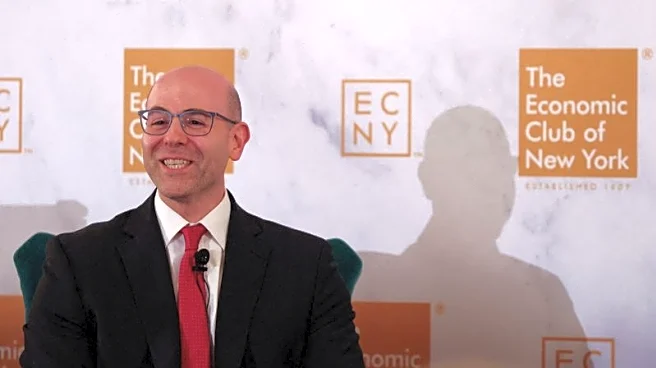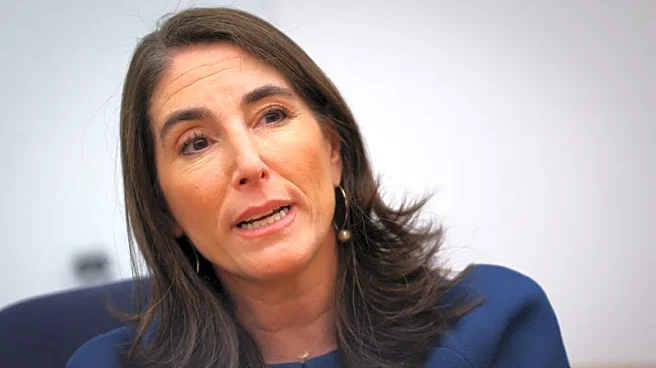What's Happening?
Federal Reserve officials have indicated that a rate cut in December is unlikely, citing concerns over inflation and mixed economic signals. Minneapolis Federal Reserve President Neel Kashkari noted that inflation is currently
running at around 3%, which he considers too high, while parts of the labor market appear to be under pressure. San Francisco Federal Reserve President Mary Daly mentioned that the risks to the Fed's goals are balanced following two interest rate cuts this year, but expressed concern over the slow decline in services inflation and potential slowing labor demand. Cleveland Federal Reserve President Beth Hammack emphasized the need for restrictive monetary policy to address inflation concerns. These statements have led to a decrease in trader bets on a December rate cut, dropping from a 62.9% probability to 49.6%, according to CME Group's FedWatch tool.
Why It's Important?
The Federal Reserve's stance on interest rates is crucial for the U.S. economy, affecting borrowing costs for consumers and businesses. The reluctance to cut rates in December suggests a cautious approach to managing inflation, which could impact economic growth and investment. High inflation rates can erode purchasing power and lead to increased costs for goods and services, affecting both consumers and businesses. The Fed's decision to maintain restrictive policies may help control inflation but could also slow economic recovery if not balanced carefully. Stakeholders such as investors, businesses, and policymakers will need to navigate these economic conditions, potentially adjusting strategies to mitigate risks associated with high inflation and interest rates.
What's Next?
The Federal Reserve's upcoming meetings and economic data releases will be closely watched for further indications of monetary policy direction. Investors and businesses may adjust their strategies based on the Fed's actions and statements, potentially leading to shifts in market dynamics. Policymakers will need to consider the broader economic implications of maintaining restrictive interest rates, balancing inflation control with economic growth. The ongoing debate among Fed officials highlights the complexity of managing monetary policy in a fluctuating economic environment, with potential impacts on employment, consumer spending, and overall economic stability.
Beyond the Headlines
The Federal Reserve's cautious approach to interest rate cuts reflects broader concerns about economic stability and inflation management. This situation underscores the challenges of navigating monetary policy in a post-pandemic economy, where traditional indicators may not fully capture the complexities of current economic conditions. The Fed's decisions will have long-term implications for economic growth, potentially influencing fiscal policy and government spending priorities. Additionally, the global economic context, including international trade dynamics and geopolitical factors, may further complicate the Fed's policy decisions, requiring a nuanced approach to ensure sustainable economic recovery.












